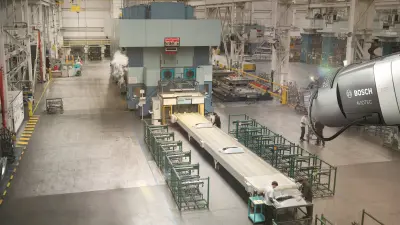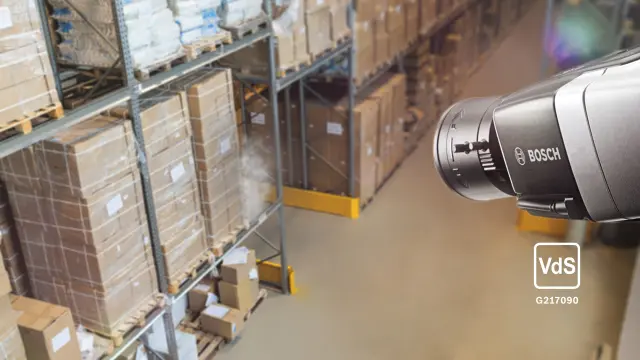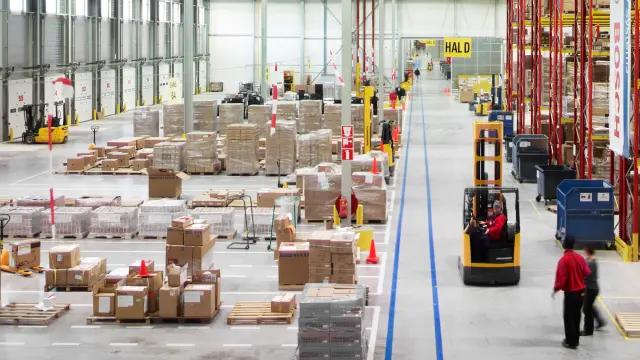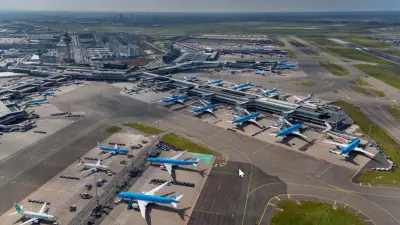The AVIOTEC system from Bosch: Combating smoke and fire with video
Every firefighter probably has their own personal nightmare. It’s safe to assume that many of these scenarios involve large buildings filled with people or enormous fire potential. There is a simple reason why deadly situations like these occur: a lack of automatic early fire detection. The result is that fires are already far advanced when helpers arrive on the scene.
In most cases, smoke detection is a reliable option for sensing fires at an early stage, since smoke is usually released before flames are visible. Point-type, optical beam, and aspiration smoke detectors can be used. In order for these to work, however, sufficient concentrations of smoke must reach them. In large buildings, and especially those with high ceilings, they are often too far from the smoke source. Due to the large volume of such buildings, moreover, by the time the smoke gets to them it is highly diluted. Consequently, a fire in its early stages is often unable to produce enough smoke to be detected, or else it doesn’t generate enough lift to blow the smoke up to where the detectors are installed.
What’s more, conventional detectors tend to become soiled over time, which reduces their sensitivity and increases the probability of false alarms. They therefore need to be regularly cleaned, which can be difficult and costly in environments of this kind. It can also occasionally be necessary to replace their batteries, although this isn’t necessarily an issue since today’s good-quality detectors typically come with long-lived batteries. The effectiveness of conventional fire detection technology is also limited in dusty and moist environments, making it very difficult to reliably sense and report fires while minimizing false alarms.

In demanding and harsh environments of these kinds, as well as in large-volume buildings, video-based technologies permit significantly more reliable early detection and warning than conventional detectors, which always depend on smoke drifting to them. With video-based systems, it is enough for smoke or flames to appear within their viewing field; they detect fires right at their source.
Intelligent algorithms with physical fire models or neuronal networks process the captured images and compare them with the typical characteristics of different kinds of fire to tell whether smoke is present. Different kinds of flame can also be recognized at an early stage in this way. These systems are also low-maintenance and require neither batteries nor a power connection if they are operated with Power over Ethernet (PoE).
Ideal for Large Halls
Especially in many industrial facilities, which are typically characterized by large, halls with high ceilings, video-based technologies can provide much earlier detection of fires. Although optical-beam detectors are already an improvement over ceiling detectors, they are too easily triggered by people or machines moving within their range. And, like ceiling-mounted detectors, they are susceptible to false alarms as a result of dust or moisture. Video-based technologies are substantially quicker and more reliable and, thanks to their intelligent signal processing capabilities, can also deal quite well with fluctuating background lighting.
In addition, these systems can be much more easily and flexibly installed than ceiling detectors and require only minimal maintenance. Finally, they visualize the events they report, which is a boon for planning effective responses. These features also make video-based technologies highly effective for safeguarding critical infrastructure that, like power plants, would have devastating effects in the event of a complete failure.
Conventional detectors aren’t only problematic in large functional structures. The examples include cultural heritage buildings with protected status and luxury hotels, in which conspicuous ceiling detectors would be unaesthetic. Older buildings in particular also contain areas that are difficult or impossible to enter, which poses considerable obstacles to installing and operating conventional fire detectors. Video-based fire detection is an ideal solution in these cases; owing to the detectors’ large visual range, they can usually be discreetly installed without creating eyesores, and provide the additional benefit of remotely monitoring inaccessible areas.
In facilities that process raw materials, conveyor belts in particular pose major fire hazards, since they can heat up under the weight of thousands of tonnes. The biggest risk here is that many raw materials are readily flammable, and once a fire breaks out it can spread extremely fast. They can also release large quantities of dust while being transported on conveyor belts. For this reason, a leading German raw materials processor has added video-based fire detection to its arsenal, also in workshops where sparks can fly. A Nigerian producer of mattresses and other foam-based products is taking the same approach for protecting its three factories, in which large amounts of foam and polyurethanes constitute an especially great potential fire hazard, making early detection absolutely essential. The goal of detecting incipient fires within 30 seconds can’t be achieved with conventional technologies.
Standardization
As a rule, video-based technology isn’t used by itself. Instead, it supplements existing solutions certified under the European EN 54 stand, such as sprinkler systems and smoke detectors, to increase the speed and reliability of detection. EN 54 prescribes detection within 180 seconds, and video-based technologies are significantly faster than this. In some cases, this can significantly reduce the cost of fire insurance or even be crucial for obtaining it for highly critical environments with high fire loading. Video-based fire detection is not yet covered by the EN 54 standard, but it is a so-called “active work item” of the ISO, and other standards already address it (FM3232 and UL268B).
The AVIOTEC system from Bosch is so far the only one to be approved by VdS Schadenverhütung GmbH (VdS), Europe’s largest institute devoted to corporate security and safety, as an automatic video camera for visual fire monitoring. VdS has developed a complex testing methodology for video-based fire detection that includes the proven VdS 2203 guidelines on “requirements for fire protection software” and “requirements for testing flame detectors”. VdS certificates for individual solutions have already served more than once as the basis for formal standardization of smoke detection methods, so it is very possible that the EN 54 standard will be extended to include video-based fire detection in the not-too-distant future.



